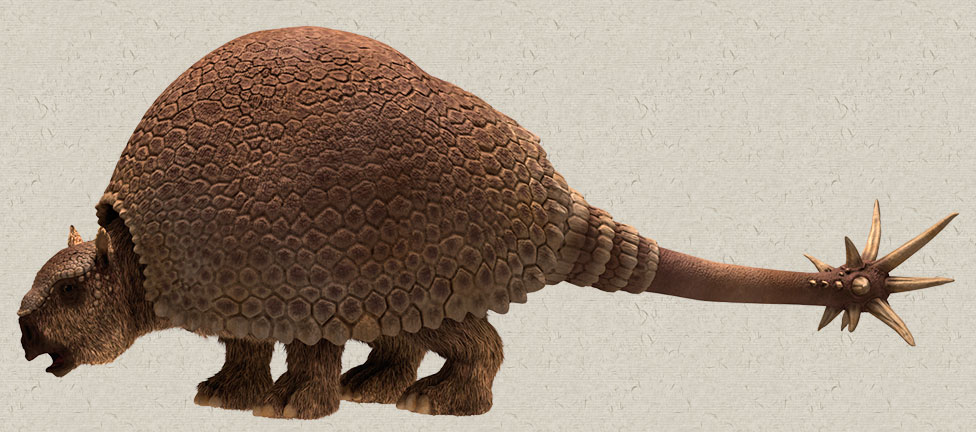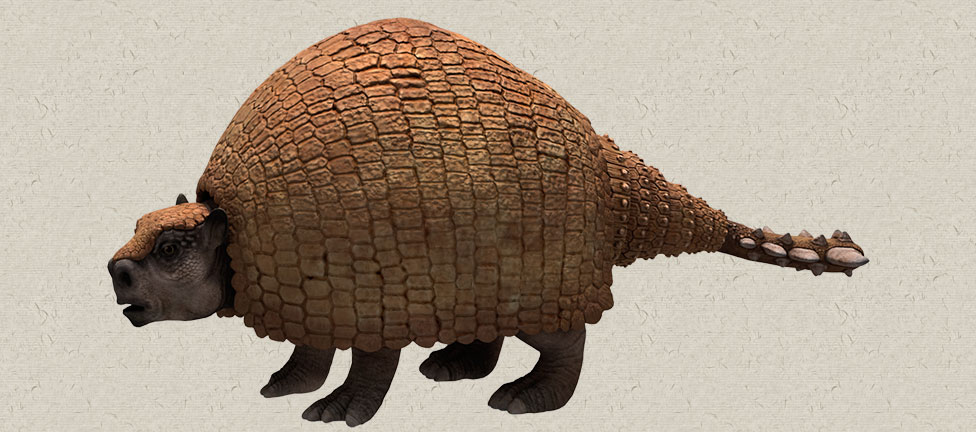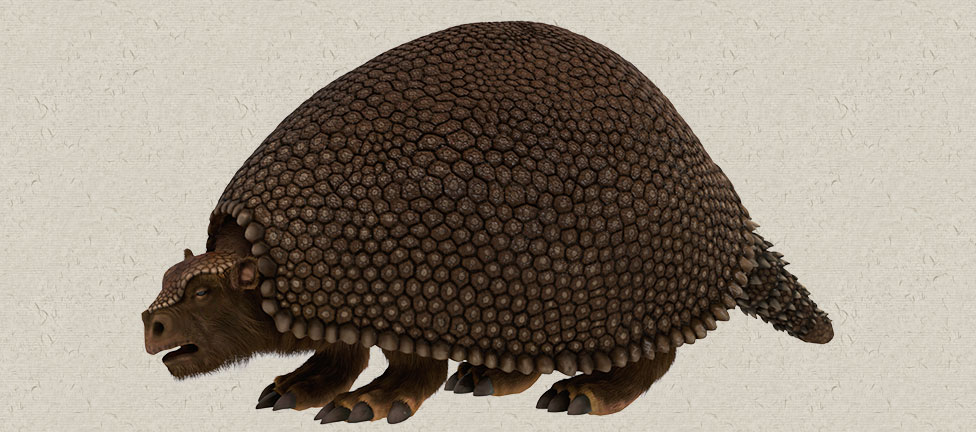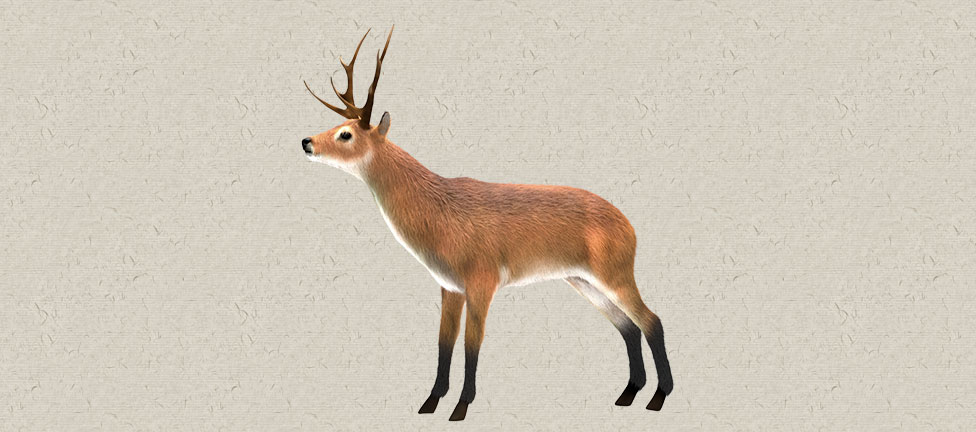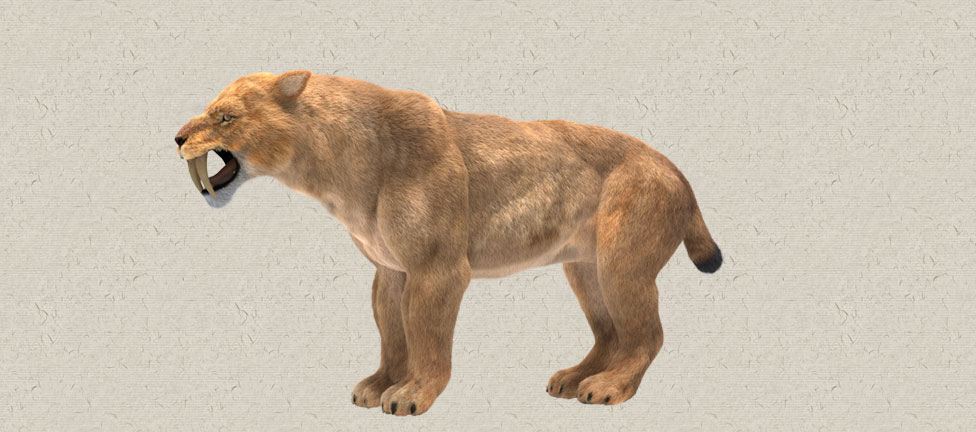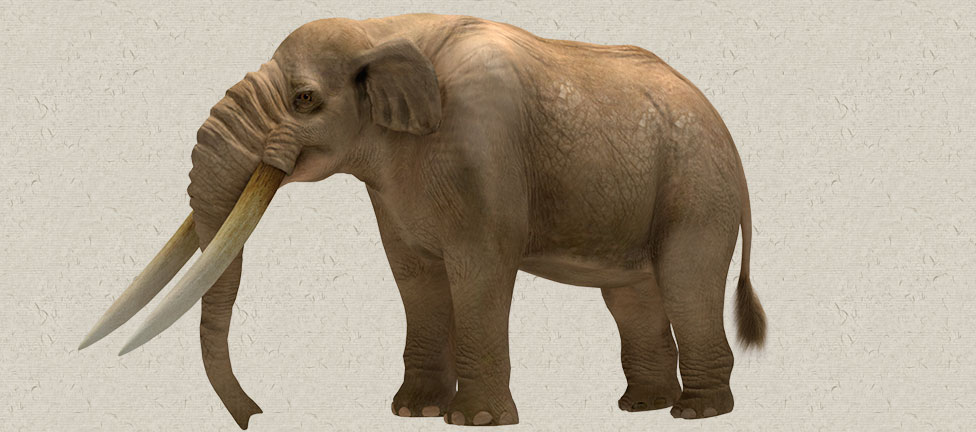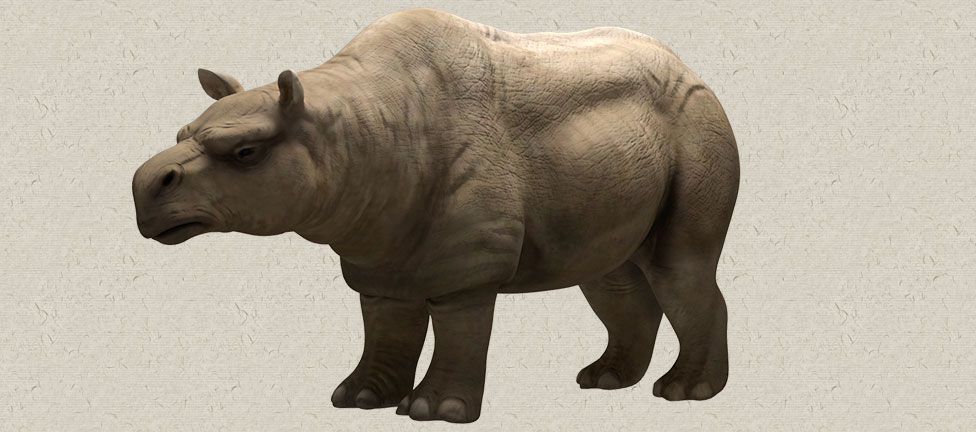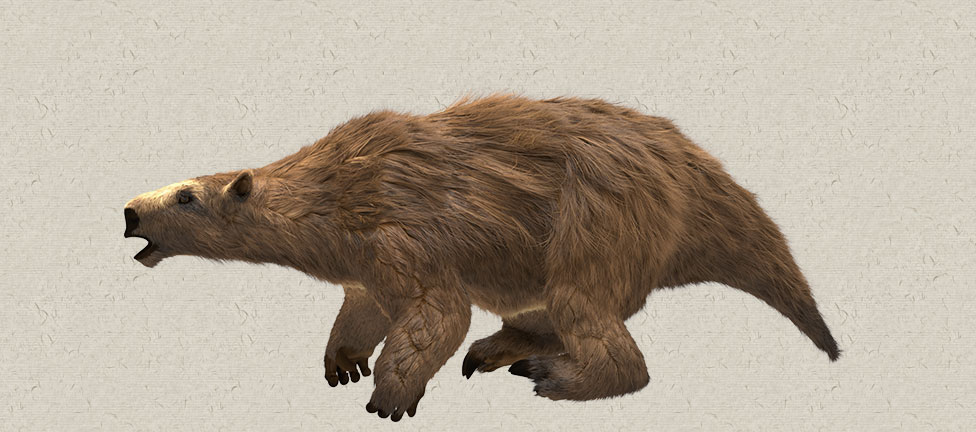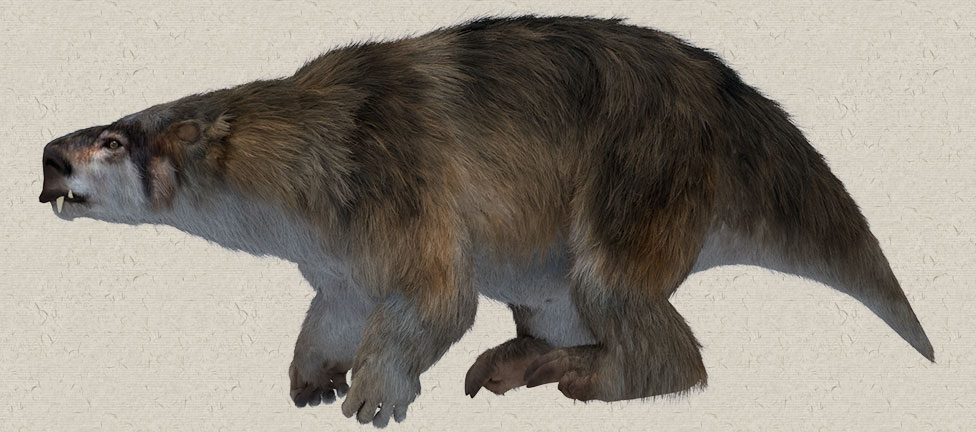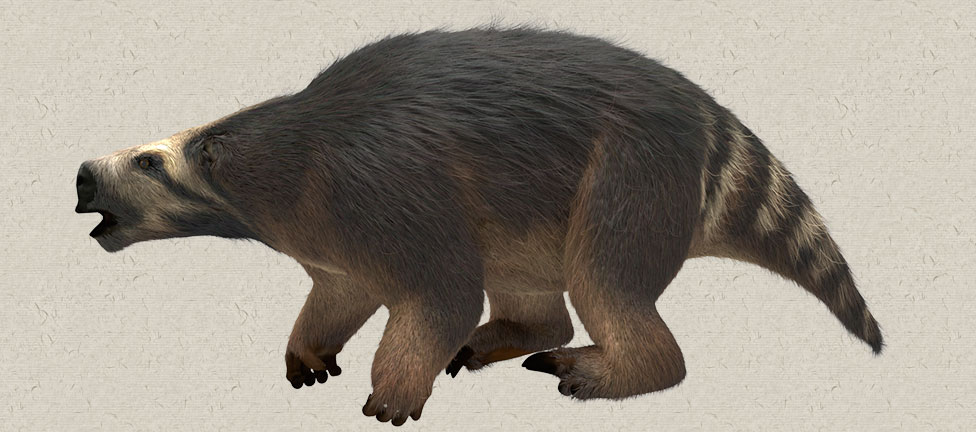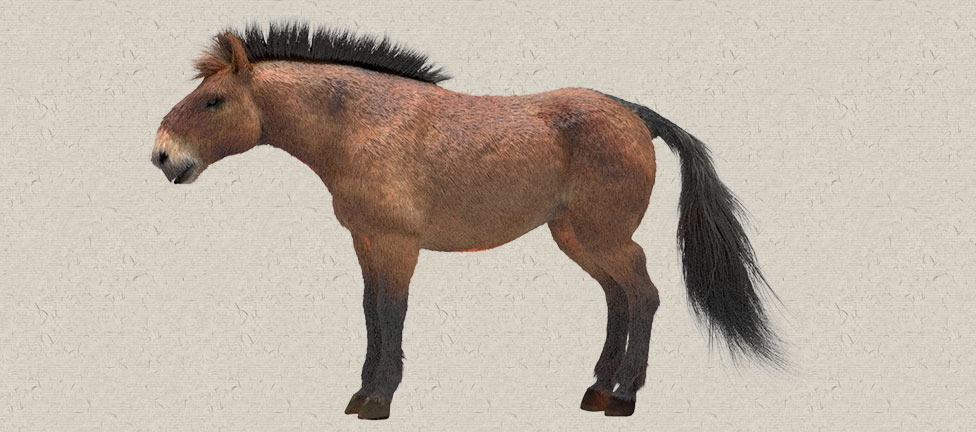The Vizcaíno stream (“arroyo” in Spanish”) runs near Sauce, Departmento de Canelones, República Oriental del Uruguay. Very close to its headwaters, its course slides towards the east across Route 6, twists southward, then eastwards and, after passing under the simple yet elegant railway bridge, placidly widens onto the basin formed by the silicified cretaceous sandstones of the Mercedes Formation. There, heavy winter rains yield flooding; however, the stream flow usually comes to a standstill in the summer, leaving a string of lakes in the shape of a necklace that local farmers use to irrigate their crops.
One of these pools must have completely dried up during the severe 1997 summer drought. As a result of that, the wondrous surprise appeared on its bed – numerous remains of the gigantic sloth Lestodon; a few of the South American ungulate Toxodon and a further three species of glyptodons: Glyptodon, Doedicurus and Panochthus. Many of these remains were then gathered by students of Sauce’s high school under the guidance of some of their teachers and are now part of the collection of the Museo Paleontológico de Sauce (under development).
Fourteen years had to pass for excavations to resume – a human flaw (scientific research being no exception to the rule!). But it was well worth the wait. In March 2011, the team of palaeontologists (see below) proceeded with the systematic observation and collection of the most vulnerable remains.
Even though the great quantity of fossils already extracted – and those still lying in the depths of the Vizcaíno stream, ensure there to be work for many years ahead (thus the enormous importance of the site), there are also signs that lead us to believe humans left their imprint on some of them – such as human-made marks found on a collarbone, a rib and other bones. As if this weren’t enough, radiocarbon-dating in several labs, with diverse procedures and on varied remains (bone as well as wood) shows them to be surprisingly old, going back nearly 30.000 years. The results, provisory as they are always in science, increase by two-fold the accepted time of peopling of the Americas, Alaska excluded.
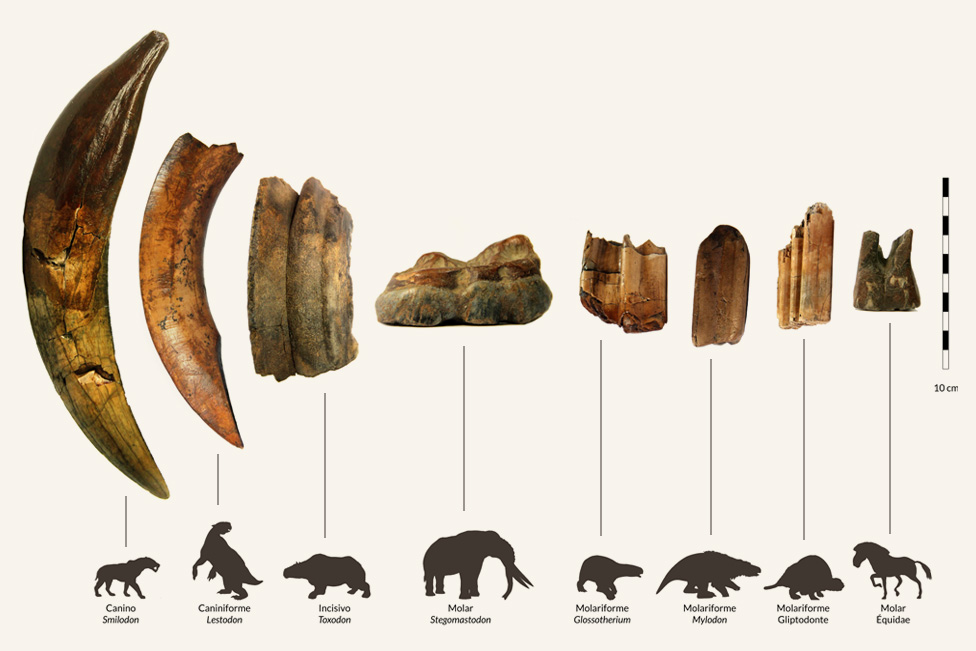
Fossil teeth found in the site
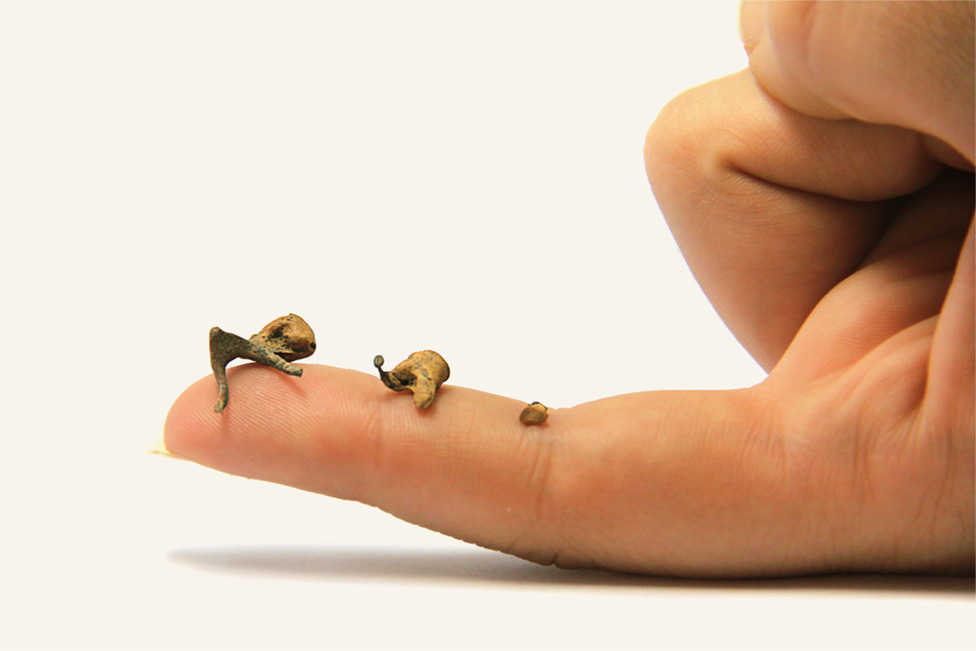
Ear ossicle of Lestodon armatus
Image gallery of the site and the fossils
